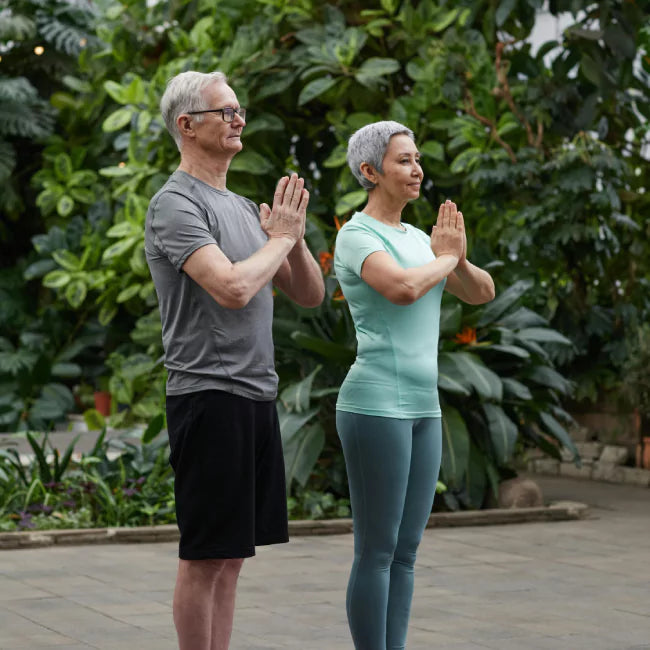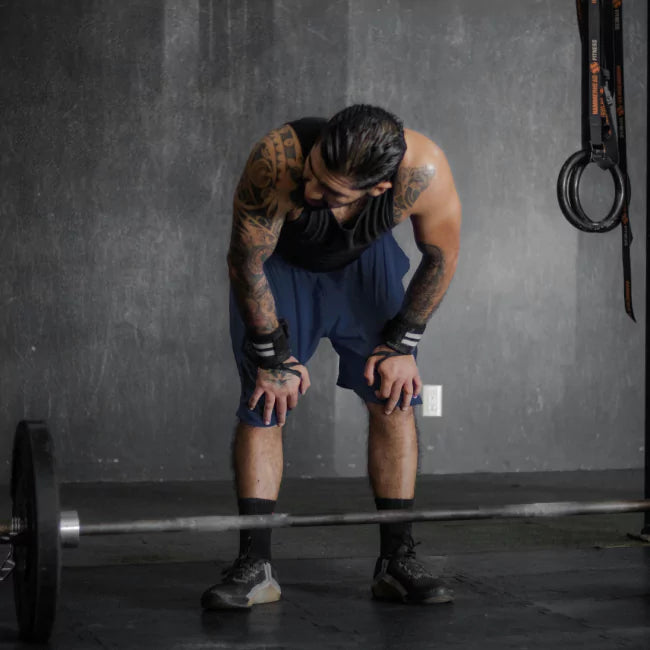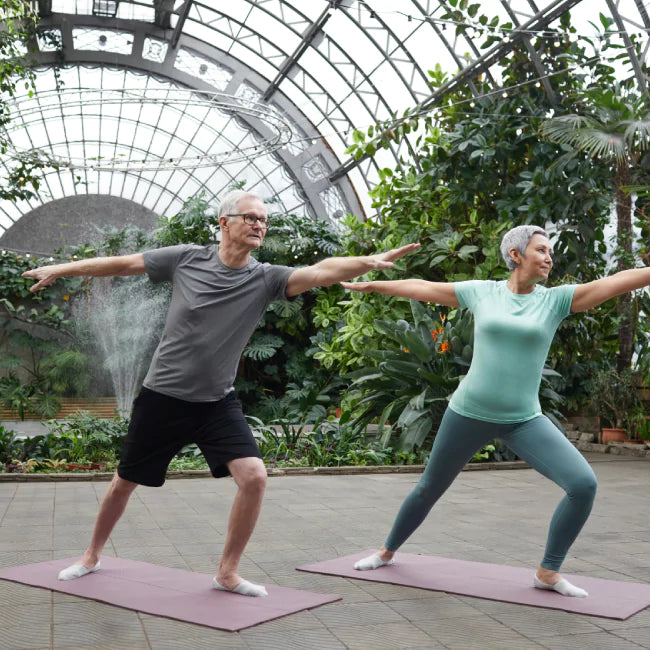A Personal Reflection on Exercise for Older Adults
 By: by Dr Robert Wolfe
By: by Dr Robert Wolfe

There’s no doubt about it: physical activity helps us age gracefully, increases longevity, and enhances quality of life. But as we grow older, physical activity and strength training must be tempered with modifications to keep us both strong and safe. Exercise for older adults should be carefully structured, diligently performed, and supplemented with essential amino acids.
New to Exercise? Here Are Some Tips!
If you haven’t exercised in years, you might benefit from some help from a certified exercise trainer to develop a program specifically designed for your capabilities and goals. You’ll see benefits from almost any type of exercise, so a trainer may not be necessary if you are otherwise healthy and mobile with good knowledge of the proper form for strength exercises. Just start cautiously and build up slowly. The key to making exercise part of your life is to do something you enjoy. From walking to swimming to tai chi…it all works!
Some of the best types of exercises are those which use your own body weight for resistance, which reduces the risk of injury while still being an effective way to build muscle strength and even muscle mass. Some examples are push-ups, including wall push-ups, resistance band exercises, balance exercises, chair squats, water aerobics, and even brisk walking. Combined with flexibility exercises, research shows these low-impact exercises contribute to better balance with a reduced risk of falls, improved overall physical health, and enhanced quality of life.
Regardless of what type of workouts or exercise program you engage in, it will be necessary to push yourself, both to create the exercise habit and to reach new performance and fitness gains. You are actually in a pretty enviable position, because you should see some rapid improvement as soon as you begin to train. The improvement will be especially dramatic if you couple your exercise with premium essential amino acid (EAA) supplements. I highly recommend Amino Co supplements, particularly Perform. And what better motivation to continue exercising than results you can see!
It’s also important to moderate your expectations. Please be aware that at some point you will plateau in your progress. This is a normal part of developing and sustaining fitness. When you hit a plateau, you just need to push harder and increase your activity levels to keep improving. Resist the urge to baby yourself! You are capable of more than you realize.
The key to success is consistency. You have to make exercise a nonnegotiable time of the day. Setting a schedule and sticking to it is the surest way to maintain the consistency that you need.
An Exercise Pro? I’ve Still Got Tips!
If you are an exercise aficionado, you’re starting with the tremendous advantage of being in much better shape than the average person your age. Even so, I’m guessing you still face challenges. The challenges are part physical and part psychological, and the two aspects may merge together indistinguishably. I can relate, as I fall into this group and have talked with many former athletes in the same situation.
When I was young, my athletic focus was basketball. I was even drafted by the Warriors into the NBA. When my basketball career ended, I took up distance running seriously. Although not a world-class runner, I nonetheless embraced the challenge of setting both short- and long-term goals, and I trained hard to reach those goals. Being a scientist, I approached training for marathons methodically. I carefully recorded every workout in detail, including distance, time, etc. I did interval workouts twice per week and recorded every split of every interval. I raced steadily from age 25 until last year at age 69 when I had my hip replaced.
As I got older, I faced the same challenges that all of my friends who ran faced. Injuries became more frequent and it took longer to recover, not just from injuries, but from workouts. What was most discouraging was that, regardless of my workouts, I inevitably got progressively slower over the years. At 65, I was still trying to do the same program as when I was younger, but with drastically less success. I was running quarter-mile intervals at a considerably slower pace than I could maintain for an entire 26-mile marathon when I was younger. Intellectually, I understood that the days of 65-second quarter-mile intervals were long in the rearview mirror, but psychologically, it was much harder to accept. I would look at the workouts in my running log that I used to do and feel overwhelmingly discouraged at the decline in my ability. I could understand why almost everyone I knew from years of running had given it up.
At some point, I decided that I would rather keep running at a slower pace and within my reduced capabilities than quit altogether. This is a realistic modification when it comes to exercise for older adults. I retired the old running logs and started a new one so I could train refreshed. I wish I could say that, all of a sudden, I saw the light and loved running again, but it doesn’t really work that way. I still get frustrated when I’m jogging and someone breezes by me like I’m standing still. Nonetheless, I have made enough peace with my current abilities that I keep plugging away every day. I now take naps after good workouts, as I recognize I don’t recover very fast anymore. I never question why I am still working out—it’s just what I do.
The moral of my personal story is to keep doing whatever activity or sport you love. As difficult as it may be, it’s productive to move past the dismay of needing to play from the forward tees on the golf course when you used to play from the tips, or the disappointment you feel because you can only play doubles in tennis now. The benefits of participation in activities you enjoy trump any of these psychologically “negative” aspects. The social aspect of joining workout classes in the gym or a golf group is a great hack for adjusting to retirement. You just need to let go of what you used to do, and be happy with what you can do now.
Supplements for Seniors
I have found that using an EAA supplement before and after exercise has benefited my training tremendously, especially when it comes to recovering faster. I take a pre-workout beverage that seems to give me energy to get started and sustains my effort throughout the workout. I also take a post-workout muscle support supplement that seems to reduce inflammation and improve my gains in strength.
I have seen firsthand how combining EAA supplements with exercise positively influences body composition. One of the advantages of my line of work as a researcher is that I have been able to measure my body composition on a regular basis for the past 45 years.
When I was young and training twice a day for competitions, I had about 4% body fat. I predictably gained fat and lost muscle with time, despite continued training. At 65, my body fat was 22% of my body weight. Two years ago, at age 69, I started combining EAA supplements with my normal exercise routine. Even with the surgical stress of a hip replacement, I have increased my lean body mass and reduced my fat mass to slightly less than 20%. It is remarkable to have your body composition moving in a positive direction when you are in your 70s! And I entirely credit the regular use of EAA supplements in conjunction with my habitual exercise routine for the improvements in both body composition and performance that I have experienced in the last couple of years. I hope I’ve inspired you to follow suit!


Up to 25% off Amino
Shop NowTAGS: anti-aging cardiovascular strength training
Join the Community
Comments (0)
Most Craveable Recipes




 833-264-6620
833-264-6620



















